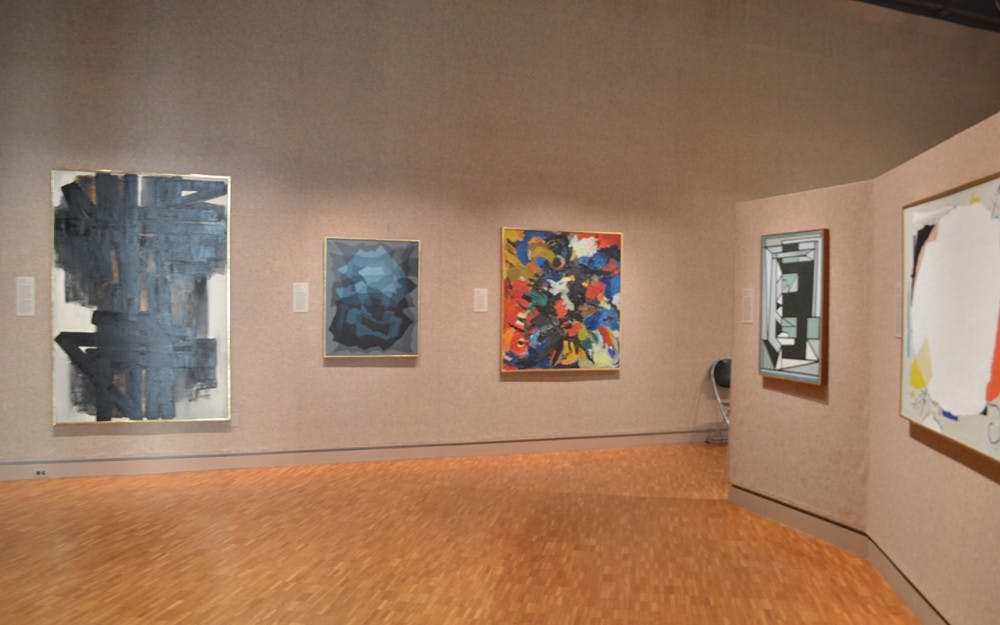The Eskenazi Museum of Art opened two new special exhibitions March 11, and each covers two different modes and periods of time in art.
The first of these exhibitions, “Abstract Painting in Europe, 1949-1968,” is a display of the work of European abstract artists from the post-WWII era in the Judi and Milt Stewart Hexagon Gallery.
Jenny McComas, curator of European and American Art, said the ten-piece exhibition of ten pieces was inspired by the museum’s collection of works from this time period.
“I wanted to get these little known works out of storage and show our visitors what was going on in European art in the postwar era,” McComas said. “This is a topic that is not frequently addressed in American Museums.”
McComas said the topic of this exhibition also relates to research she has conducted in other contexts, so her knowledge base of the pieces in the collection was enriched by that experience.
One of the most impressive of the pieces is one called “M40-1967,” by the Polish artist Wojciech Fangor, McComas said.
“As a work by an artist from communist Eastern Europe, this painting expands the narrative of postwar European abstraction by showing us how artists on the other side of the Iron Curtain responded to artistic trends from Western Europe and the United States,” McComas said.
This particular painting allows viewers to see connections to op art and color field painting, which was popular in the U.S. in the 1960s, McComas said. There is also, however, a connection to more old-world styles that makes the piece of art more complex.
“The diversity of abstract painting is fascinating,” McComas said. “The term abstraction can refer to works that are painted in a very gestural manner or to geometric compositions that are very precisely composed. And not all abstract works are ‘non-objective.’”
The other new exhibition focused on contemporary Asian art, curated by Judith Stubbs, curator of Asian Art.
“A Step in Time, Across the Line: Recent Works by Chee Wang Ng,” looks into the modern immigrant and diaspora experience through the medium of conceptual photography, installation and video. The exhibition is Ng’s first solo show to date.
“I usually don’t deal with contemporary art,” Stubbs said. “I am an art historian and usually curate exhibitions of historical art materials, but this has been fun and a great experience. I thought it would be a good fit for the ‘China Remixed’ program.”
Stubbs said it is difficult for her to choose a favorite piece in this particular exhibition, though she finds “108 Rice Bowls” visually beautiful. She said the photographs resonate with her as well because they refer to contemporary imagery as well as more classic motifs.
The goal of the exhibition is to allow viewers to open their minds, Stubbs said.
“I hope viewers will enjoy this exhibition for its beauty and reflect on the historical plight of Chinese immigrants, perhaps pause for a moment and think of immigrants today,” Stubbs said.
In terms of her curated exhibition, McComas said she hopes viewers find abstract art to be more relatable than they may have previously thought.
“Some abstract paintings do have embedded meanings — spiritual, political or personal — that will not be readily apparent,” McComas said. “This is where the exhibition brochure and labels can add to their understanding of these works.”






